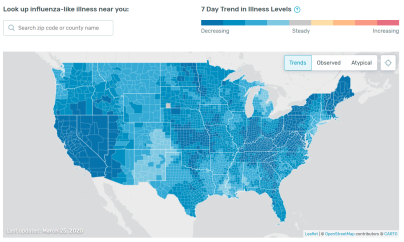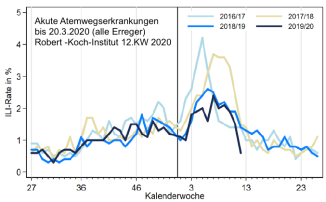
Moderators: Elvis, DrVolin, Jeff
identity » Wed Mar 25, 2020 11:10 pm wrote:How long before people are begging for martial law?

Richard Schabas is a retired physician. He was Ontario’s chief medical officer of health for 10 years, and was chief of staff at York Central Hospital during the SARS crisis in 2003.
[...]
Is COVID-19 a global crisis? Certainly for people who can’t add.
I learned some powerful lessons from SARS in 2003. Maybe the most important one was how important it was to focus on what has happened rather than on what might happen. In other words: “Just the facts, ma’am."
[...]
But we also need to be sensible. Quarantine belongs back in the Middle Ages. Save your masks for robbing banks. Stay calm and carry on. Let’s not make our attempted cures worse than the disease.
How are you supposed to wash your hands regularly if you have no running water or soap? How are you supposed to implement “social distancing” if you live in a slum or a refugee or containment camp? How are you supposed to stay home if your work pays by the hour and requires you to show up? How are you supposed to stop crossing borders if you are fleeing from war? How are you supposed to get tested for #COVID-19 if the health system is privatized and you can’t afford it? How are those with pre-existing health conditions supposed to take extra precautions when they already can’t even access the treatment they need? - Making the Pandemic Worse, Kathy Kelly, The Progressive

March 26, 2020 (I)
- USA: The latest US data of March 25 shows a decreasing number of flu-like illnesses throughout the country, the frequency of which is now well below the multi-year average. The government measures can be ruled out as a reason for this, as they have been in effect for less than a week.


US Influenza Trend (March 25, 2020)
USA: Decreasing flu-like illnesses (March 25, 2020, KINSA)
- Germany: The latest influenza report of the German Robert Koch Institute of March 24 documents a „nationwide decrease in activity of acute respiratory diseases“: The number of influenza-like illnesses and the number of hospital stays caused by them is below the level of previous years and is currently continuing to decline. The RKI continues: „The increase in the number of visits to the doctor cannot currently be explained either by influenza viruses circulating in the population or by SARS-CoV-2.“ But maybe by fear?

Deutschland: Atemwegserkrankungen 2019/2020 ggü. Vorjahren

Deutschland: Krankenhausaufenthalte durch Atemwegserkrankungen nach Altersgruppen
Germany: Decreasing flu-like illnesses (20 March 2020, RKI)
- Italy: The renowned Italian virologist Giulio Tarro argues that the mortality rate of Covid19 is below 1% even in Italy and is therefore comparable to influenza. The higher values only arise because no distinction is made between deaths with and by Covid19 and because the number of (symptom-free) infected persons is greatly underestimated.
- UK: The authors of the British Imperial College study, who predicted up to 500,000 deaths, are again reducing their forecasts. After already admitting that a large proportion of test-positive deaths are part of normal mortality, they now state that the peak of the disease may be reached in two to three weeks already.
- UK: The British Guardian reported in February 2019 that even in the generally weak flu season 2018/2019 there were more than 2180 flu-related admissions to intensive care units in the UK.
- Switzerland: In Switzerland, the excess mortality due to Covid19 is apparently still zero. The latest „fatal victim“ presented by the media is a 100-year-old woman. Nevertheless, the Swiss government continues to tighten restrictive measures.
March 26, 2020 (II)
- Sweden: Sweden has so far pursued the most liberal strategy in dealing with Covid19, which is based on two principles: Risk groups are protected and people with flu symptoms stay at home. „If you follow these two rules, there is no need for further measures, the effect of which is only marginal anyway,“ said chief epidemiologist Anders Tegnell. Social and economic life will continue normally. The big rush to hospitals has so far failed to materialize, Tegnell said.
- German criminal and constitutional law expert Dr. Jessica Hamed argues that measures such as general curfews and contact bans are a massive and disproportionate encroachment on fundamental rights of freedom and are therefore presumably „all illegal“.
- The latest European monitoring report on overall mortality of March 26 continues to show normal or below-average values in all countries and all age groups, but now with one exception: in the 65+ age group in Italy a currently increased overall mortality is predicted (so-called delay-adjusted z-score), which is, however, still below the values of the influenza waves of 2016/2017 and 2017/2018.
Albert Camus, The Plague (1947): „The only way to fight the plague is honesty.“
How to read this chart:
This chart allows you to compare Kinsa's observations of the influenza-like illness level in the U.S., in orange and red, against where we’d expect them to be, in blue.
Based on our data, influenza-like illness levels in the U.S. are higher than what we’d expect at this time of year.


We are not directly measuring COVID-19 infections. This is a map of unusually elevated prevalence of flu-like symptoms. There are a number of possible causes, all of which may be contributing to elevations in reported illness levels:
Increased healthcare seeking behavior in light of the COVID-19 pandemic
Seasonally abnormal cold/flu viruses circulating in particular communities. Per CDC, as of March 16, “flu activity as reported by clinical laboratories remains high.”3
COVID-19 Infections
That said, since March 1 we’ve seen a very strong correlation between cumulative atypical illness incidence and positive COVID-19 tests (at the state level) in terms of geographies affected and timing within affected geographies, which suggests that our data provides a useful indication of where COVID-19 may likely be occurring.
[...]
Are you seeing increased activity and does this affect your illness signal?
As of March 2020, we are seeing 2-3x the number of users taking temperatures than we've tracked in previous flu seasons. This does not impact our illness signal, as our modeling already accounts for rapid changes in our user base. We also benchmark our signal against the Centers for Disease Control (CDC) at the end of every flu season when the CDC has finalized their illness reporting. We regularly see an in-season correlation of R2 of >= 0.95.
Key Takeaway: A significant and rapid change in temperature readings does not affect our illness signal.
How often is the map updated?
Illness incidence levels are updated nightly.
Users browsing this forum: No registered users and 9 guests